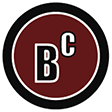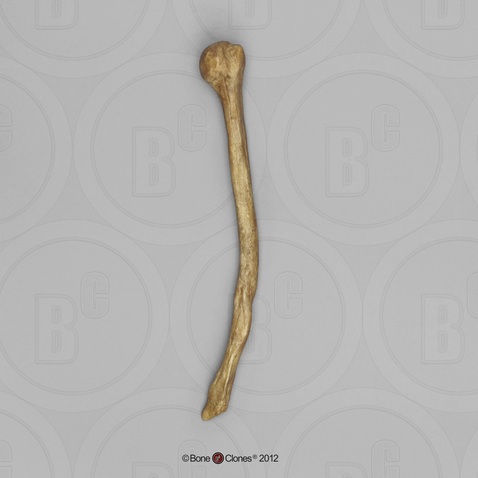-
Fields of Study
- K-12 Education
- Advanced Anatomy
- Forensics
- Physical Therapy
- Primate Locomotion
- Non-primate Locomotion
- Biological Anthropology
- Paleontology
- Bioarchaeology
- Marine-Aquarium
- Veterinary
-
Zoology
- All Zoological Items
- Endangered Species
- Skulls
- Skeletons
- Cranial Elements
- Postcranial Elements
- Eggs
- Limbs
- Teeth & Fangs
- Claws & Talons
- Brains & Endocasts
- Life Casts
- Pathology & Trauma
- Wildlife Forensics
- Sets
- Bird Sets
- Accessories
- Birds
- Mammals
- Reptiles & Amphibians
- Fish
- Sharks & Rays
- Turtles & Tortoises
- Anatomy for the Artist
- Decor
- Veterinary
- Elements
- Pathology & Trauma
-
Sets & Series
- Natural History Gift Ideas
- Decor
- Scale & Sculpture
- 3D Scanned & Printed
- Bone Boxes
- Locomotion Sets
- Forensic Sets
- Advanced Anatomy Sets
- Physical Therapy Series
- Fetal Sets
- Economy Series
- Zoology Sets
- Bird Sets
- Claw & Talon Sets
- Tooth & Fang Sets
- Primate Skull Sets
- Fossil Hominid Sets
- B.I.O.P.S.I. - Babiarz Institute
- Maxwell Collection
- Bergdorf Goodman Windows
- Accessories
- New Products
-
Our Company
- News & Specials
- Printable Handouts
- About Us
- Why Choose Bone Clones
- Bone Clones in the News
- Mission
- Contact Us
- Privacy and Security
- Frequently Asked Questions
- Testimonials
- Community Outreach
- Legal/Copyright
- Flyers
- Choosing Original Specimens
- Museum Exhibitions
- Natural History Gift Ideas
- About the Economy Series
- Acknowledgements
- Ordering & Delivery
- Warranty
- Refund/Return Policy
- Price List at a Glance
- Our Catalog
- Osteological Evaluation Reports
- About 3D Printing
- Sawyer & Maley Neanderthal Reconstruction
- Site Introduction
- Newsletter Archive
-
Human Anatomy
- All Human Anatomy
- Human Skulls
- Human Skeletons
- Head & Neck
- Postcranial Elements
- Advanced Anatomy
- Physical Therapy / Joints
- Human Brains & Endocast
- Human Life Casts
- Maxwell Museum
- Sets & Series
- Accessories
- Osteological Evaluation Reports
- Featured
- Adult Human Anatomy
- Adolescent Human Anatomy
- Child Human Anatomy
- Fetal Human Anatomy
- Fossil Hominids
-
Zoology
- All Zoological Items
- Endangered Species
- Skulls
- Skeletons
- Cranial Elements
- Postcranial Elements
- Eggs
- Limbs
- Teeth & Fangs
- Claws & Talons
- Brains & Endocasts
- Life Casts
- Pathology & Trauma
- Wildlife Forensics
- Sets
- Bird Sets
- Accessories
- Birds
- Mammals
- Reptiles & Amphibians
- Fish
- Sharks & Rays
- Turtles & Tortoises
- Paleontology
- Non-human Primates
- Forensics
All items sold on this website are replicas and are 1:1 scale unless stated otherwise. All Bone Clones® products are made in the USA. No real/natural bone is available on this site.
 ALSO SEE:
ALSO SEE:
Homo neanderthalensis Shanidar 1 Humerus, atrophied
KO-064 $102.00
40,000-73,000 BP. The nearly complete skeleton of Shanidar 1 was discovered by a team led by Ralph Solecki in 1957 in Northern (Kurdish) Iraq. This adult male (probably 40-45 years old) likely died as the result of a rockfall in the cave and died in place (Solecki, 1957). Shanidar 1 is one of the most severely traumatized hominin finds given the multiple fractures of both the cranium and postcranial skeleton and degenerative joint disease. Initially described by Stewart (1959, 1977) with extended analysis by Trinkaus (1983), the right humerus (the head of which was reconstructed by researchers) shows disuse atrophy, due to amputation and/or pseudoarthrosis, which occurred long before death. Shanidar 1's survival to such an advanced age (few Neanderthals lived into their forties) despite severe infirmities suggests some type of altruistic care of this individual.
| Scientific Name | Catalogue # | Size | Price |
| Homo neanderthalensis | KO-064 | 10 ¼" Long | $102.00 |
Related Products:
-
 Homo neanderthalensis Skull Shanidar 1
Homo neanderthalensis Skull Shanidar 1 -
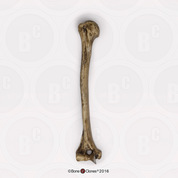 Neanderthal Humerus Reconstruction
Neanderthal Humerus Reconstruction -
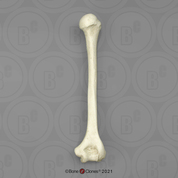 Human Female Adult Humerus
Human Female Adult Humerus -
 Human Male Adult Humerus
Human Male Adult Humerus -
 Australopithecus anamensis Left Distal Humerus - KNM-KP-271
Australopithecus anamensis Left Distal Humerus - KNM-KP-271 -
 Neanderthal and Modern Human Comparative Pelvis, Femur, Humerus Set
Neanderthal and Modern Human Comparative Pelvis, Femur, Humerus Set -
 C-7 Vertebra, Cervical Ribs and Humeri, Pathological
C-7 Vertebra, Cervical Ribs and Humeri, Pathological -
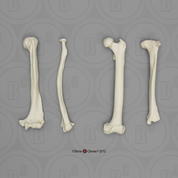 Male Chimpanzee Intermembral Set
Male Chimpanzee Intermembral Set -
 Set of 10 Primate Femora
Set of 10 Primate Femora
Newsletter Signup
9200 Eton Ave.
Chatsworth, CA 91311 USA
© 1992-2025 Bone Clones Holdings. All Rights Reserved.
Customer Service
© 2025 BONE CLONES HOLDINGS / Made by MEV


